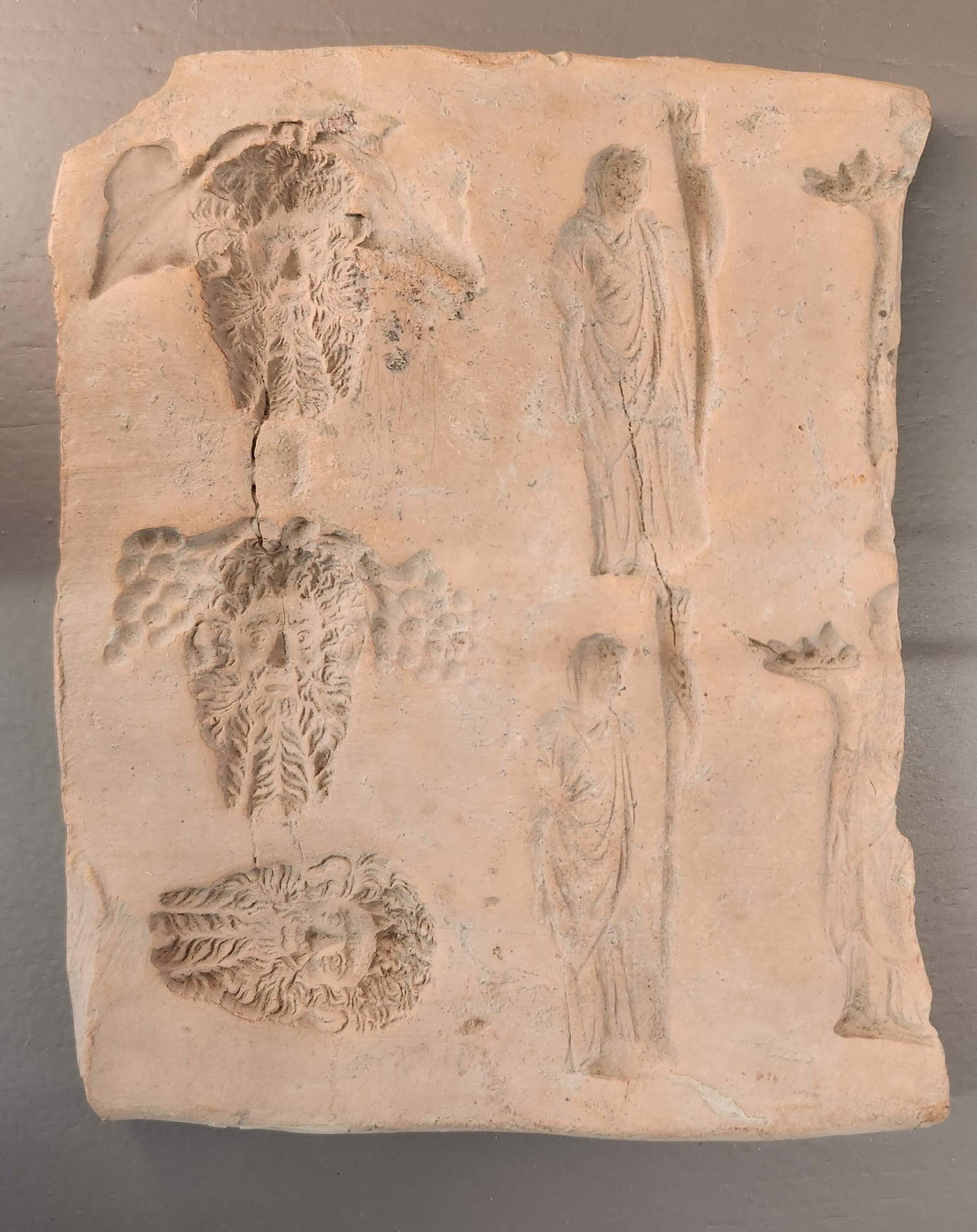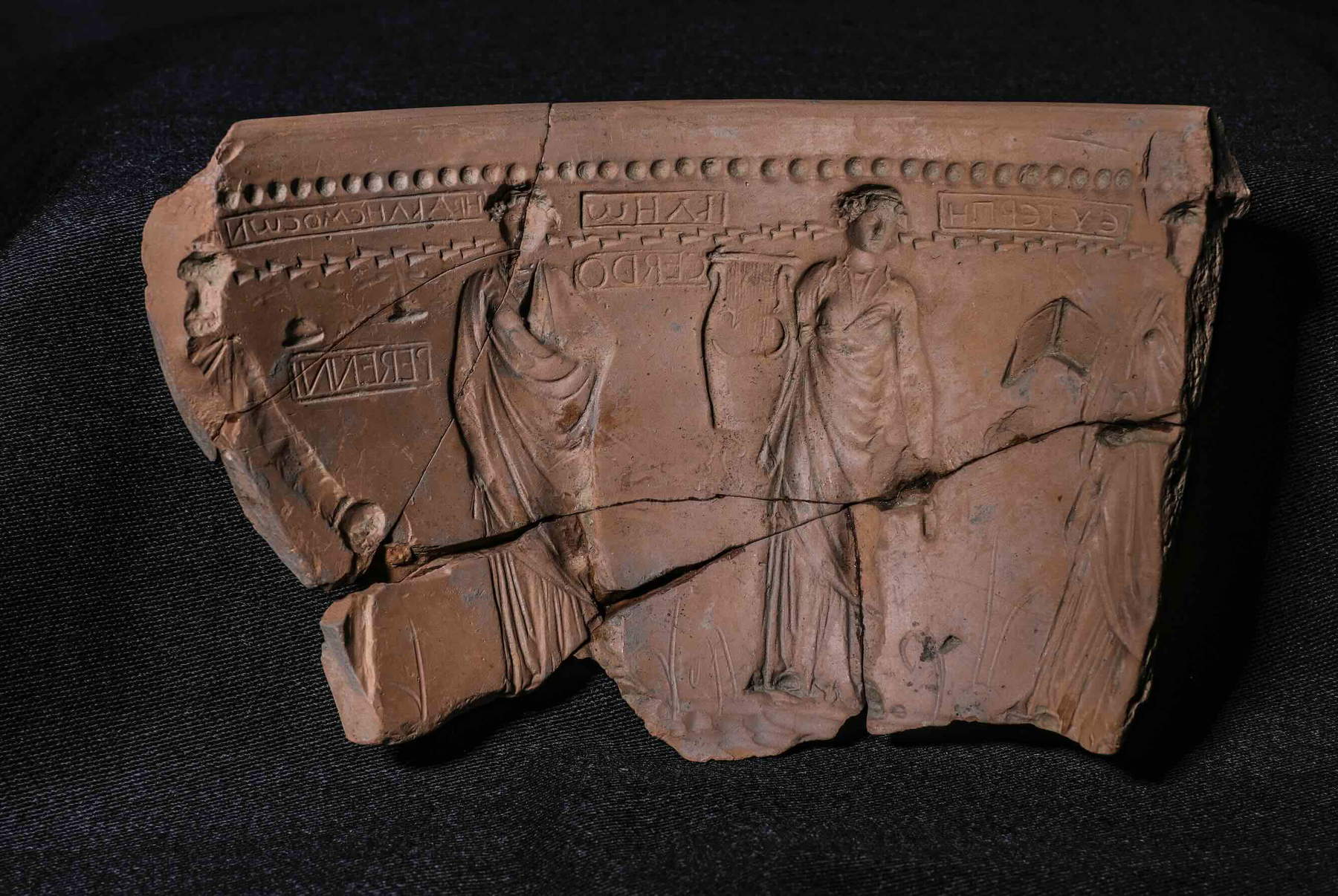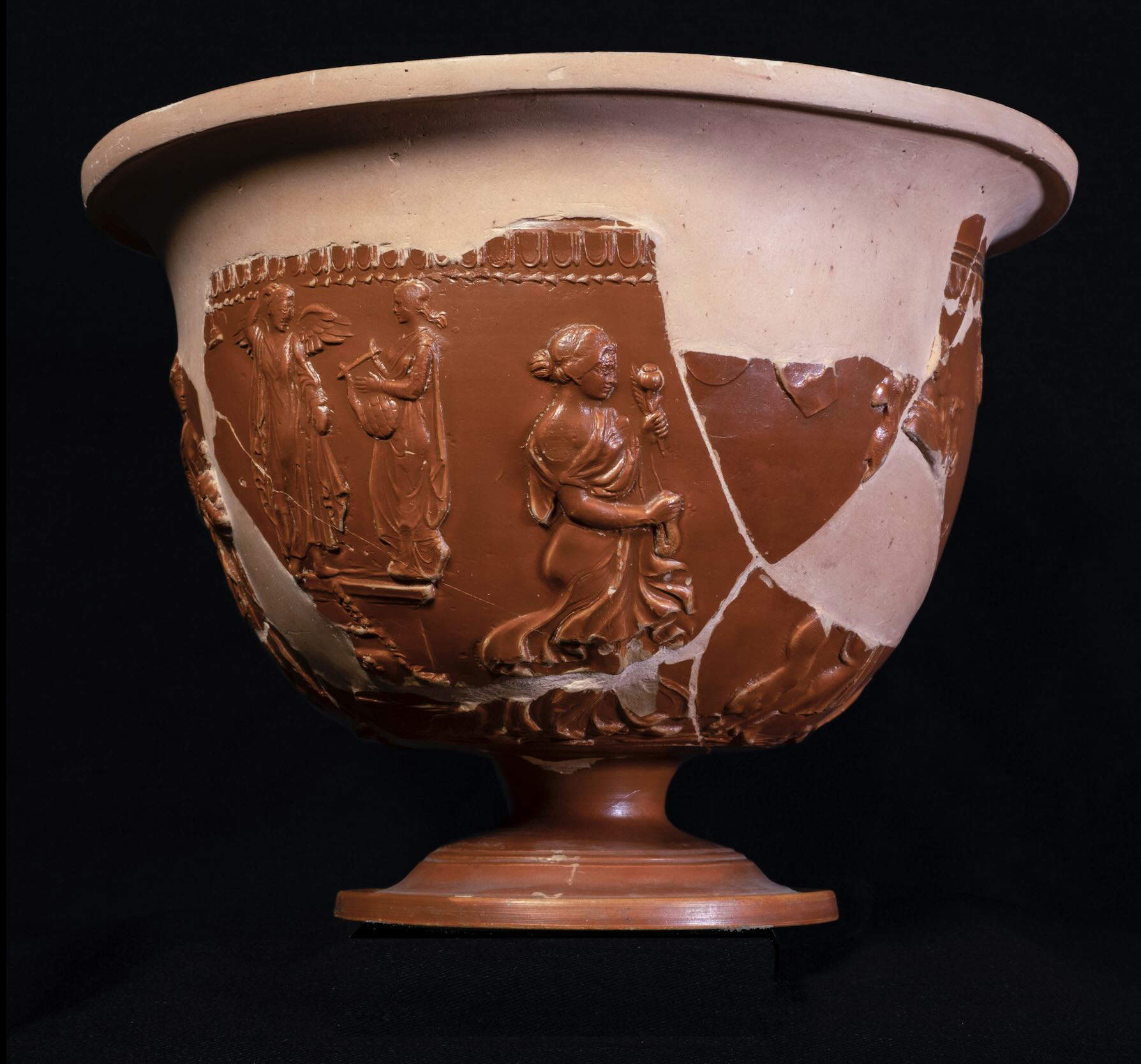From June 12, 2024 until February 2, 2025, the National Archaeological Museum “Gaius Cilnius Maecenas” in Arezzo will pay tribute, in the year of Giorgio Vasari’s celebrations, to the “potters” whose manufactures made the city famous. It is an exhibition tracing the Vasari family’s connection with Arezzo’s ancient manufactures, starting with the potter’s trade exercised by the grandfather of the most famous Giorgio, Giorgio di Lazzaro Taldi. Entitled The Vasari “potters” and Arezzo’s pottery production in ancient times, the exhibition is curated by Maria Gatto and is part of Arezzo’s articulated program of celebratory events. The City of Vasari, which until February 2025 will pay tribute to the Arezzo master on the occasion of the 450th anniversary of his death, promoted by the City of Arezzo and Fondazione CR Firenze with Fondazione Guido D’Arezzo, in collaboration with the Regional Directorate National Museums Tuscany of the Ministry of Culture, Uffizi Galleries, with the curatorship of the scientific committee chaired by Carlo Sisi.
The National Archaeological Museum of Arezzo is participating in the celebrations by recounting in this exhibition, through literary references, documents and artifacts, the links of the author of Lives with the antiquities of his land. Among these occupy a prominent place are the Arezzo vases and the Chimera, lofty products of a local craftsmanship refined in technique and cultured in iconographic inspirations in which Vasari recognized the expression of the Etruscan manner. The first stage of the exhibition allows us to enter the world of Arretina vasa and appreciate them by taking on Vasari’s perspective. These tableware ceramics, typical of Roman Arezzo and of extraordinary fortune in ancient times, constitute part of our Giorgio’s experience in two respects: on the one hand - like the Aretines of all times - he is a direct and admiring witness of continuous finds in the many city yards; on the other hand, he has of the beautiful red vases a knowledge mediated by family memories, which he brings back to us.
The exhibition, dense with cues and references, explains the origin of the name “Vasari” and recounts, paraphrasing a passage from the Life of the ancestor Lazzaro, the extraordinary events of Lazzaro’s grandfather Giorgio, “vasaro” and archaeologist ante litteram, as well as the person responsible - precisely thanks to the Aretine vases - for the first precious contact with the Medici family. The exhibition closes with an invitation to search Vasari’s paintings for references to the rich iconographic repertoire attested on the coral-colored vases decorated in relief.
There is also a section devoted to reproductions of the Chimera of Arezzo, which, because of its technical quality and the inscription on the right front paw, is for Vasari also the most obvious example of the Etruscan manner, the artistic style of the Etruscans. In addition to in-depth textual and iconographic content, this stage of the exhibition features a multimedia experience of the Chimera, with a full-size tactile reproduction and holographic projection of the statue at different stages of restoration.



“We are pleased, as Arezzo’s state museum system, to offer these important scientific and exhibition contributions to Vasari’s celebrations, in consideration of our museums’ many close ties to the life and work of the great artist, whose activity shaped the entire 16th century not only in Tuscany,” says Stefano Casciu, Regional Director National Museums of Tuscany. “With this exhibition at the Museo Archeologico Gaio Cilnio Mecenate begins our journey that develops from this original reading of the Arretina vasa collections in relation to the traditions of the Vasari family. This will be followed in the coming months by exhibitions organized at the Vasari House Museum and the National Museum of Medieval and Modern Art.”
“The Museum participates in the Vasari celebrations with a curious contribution,” emphasizes curator Maria Gatto, “which highlights little-known aspects of Giorgio Vasari, from the origin of the family name, to the special connection with ancient Arezzo ceramic production, to the first contact with the de’ Medici family. The exhibition was also an opportunity for in-depth historical-archaeological research, with the reconstruction of the investigations that have taken place over the centuries in the Carcerelle area, starting with Giorgio di Lazzaro’s first excavations and with the recovery of information in the archives and materials in the warehouses, particularly from the Gamurrini, Funghini and Gorga collections. The itinerary aimed at adults is flanked by content for children, with the kitten Gaius the graceful guest of Messer Giorgio.”
Excerpts from “The Lives” curated by Samuele Boncompagni will be read at the opening, and the exhibition will then be open until Feb. 2, 2025 from Monday to Saturday 9 a.m. to 7:30 p.m., Sundays and holidays 9 a.m. to 2 p.m. with admission included in the museum ticket, and the first Sunday of the month free admission 9 a.m. to 7:30 p.m. For the upcoming European Archaeology Days, Saturday, June 15 at 4:30 p.m. guided tour with curator Maria Gatto included in the entrance fee (info and reservations: drm-tos.archeoare@cultura.gov.it).
 |
| Arezzo, Vasari "potters" exhibition traces the history of Arezzo ceramics |
Warning: the translation into English of the original Italian article was created using automatic tools. We undertake to review all articles, but we do not guarantee the total absence of inaccuracies in the translation due to the program. You can find the original by clicking on the ITA button. If you find any mistake,please contact us.